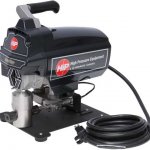Proper Use of a Hydraulic Filter Cart and How It Can Improve Your Machines Lifespan
Contamination of hydraulic fluids is inevitable—something you are probably aware of if you have used hydraulic power units or other hydraulic equipment for very long. The more you use the equipment, the more likely it becomes that water or particulates will sneak into your system.
Contamination will lead to increased wear and tear on your equipment, which is obviously undesirable. You have two options to remedy the situation—either replace the fluid, which is time-consuming and expensive–or clean the fluid. One of the simplest ways to clean the fluid is to use a portable hydraulic filter cart.
Hydraulic Filter Cart Basics
The fundamentals of a filter cart are easy to understand, even if the actual components may be quite complex. The three elements of a filter cart are:
- Pump – The pump pulls oil from your system into the input side, pushes it through the filter, and then back out the output into your existing system.
- Motor – The motor provides the energy to run the pump on the filter cart.
- Filter – The filter allows oil to pass through while stopping contaminants.
All of these components are carried on a handcart that can be rolled to most locations in your shop or job location.
How to Use a Hydraulic Filter Cart
Using a filter cart is fairly simple. You need to plug the inlet and return into the hydraulic reservoir of your equipment, preferably with inlet and return a good distance from one another. Power up the cart and allow it to filter the entire volume of oil.
There are some factors that you should keep in mind, however. These include:
Type of Filter
When it comes to cleanliness, you have a specific ISO code you are trying to reach. Choose your filter based on the code you are trying to achieve. Pay attention to the micron size of the filter as well. You want to be sure that the filter is fine enough to remove the particles that are contaminating your oil.
Power Source
Filter carts are available with several different power sources. Not all will be ideal for your circumstances. It is a good idea to make certain that the power source on the cart you use is compatible with your work site.
Flow Rate
The cart you choose should have a pump that can handle your needs. There really is no pump that is perfect for every situation. A good rule of thumb is that the max rate of flow for the pump should be 10 percent of the full volume of the pump. Pay attention to the temperature of the oil, the fluid compatibility and the viscosity of the fluid when choosing a pump.
Cart Features
You can get a variety of features on a cart, including different types of tires, hoses, configurations for hose end fittings, sample ports and more.
Test Your Oil
Testing the oil is not required, but it is certainly recommended. Only after testing can you be sure of the state of the oil and whether you need to filter it or not. By testing, you can determine what types of contaminants are in the oil and therefore what type of filtration you need to use. Testing can also tell you if the oil has reached its maximum lifespan. If all the additives are depleted, filtering is not going to fix the oil.
Why You Should Filter Your Fluid
Clean oil ensures that your equipment is running as well as can be expected. While it can be tempting to put off filtering, it is not recommended. Clean fluid achieves several benefits, including:
- Equipment runs properly – You purchased your hydraulic system to get a job done. But there are certain requirements that must be met for the system to operate correctly, and one of those is using clean fluid.
- Extends the lifespan of equipment – Friction is the enemy of machinery, and contaminants increase friction. Even a few particles can increase resistance in your system, which brings heat and degradation.
- Makes equipment servicing more predictable – Your equipment will need to be serviced periodically. Regular service intervals are easy to plan for. But unexpected breakdowns are not something you want to deal with. Running oil that you know is clean means you are less likely to experience a surprise problem.
- Proactive maintenance – by utilizing a hydraulic filtration system such as the Air and Hydraulics Equipment’s portable cart, you are preventing unnecessary damages to your power unit
Your Source for Hydraulic Equipment Repair
At AHE, we strive to meet all your hydraulic equipment repair and supply needs. Here you will find the best in hydraulic products, including hydraulic filter carts, as well as service and repair options. Download our hydraulic filter cart cut sheet. Please contact us to learn more.










